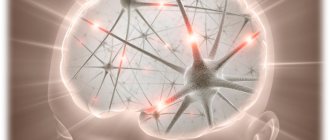Only one who accepts himself and the world around him holistically, with all the pros and cons, can be called an adult. Everything else is immaturity, which is sometimes difficult to get rid of until your hair turns gray. Accepting your weaknesses and turning them into strengths is what it means to move on to true adulthood.
Recently I came across an article with the paradoxical title “On the dangers of positive psychology.” I was shocked by the phrase in it: “The problem is not that life is difficult, we somehow cope with it. The problem is that we are made to think that life is not difficult.” Positive psychology literally creates a feeling of guilt when a person fails to cope with difficulties. Whenever something happens that upsets us, there is this word “weakness” burning in the skies and on the forehead, as if accusing us. And then we urgently want not only to sort out our difficulties, but to put on “patches”, to justify ourselves to ourselves and others, as if we cannot afford to be weak or feel emotions, be angry or negatively assess the situation.
If we try, through wishful thinking, to notice only strength, positivity and joy, then this literally means that we do not analyze the risks and do not accept reality in its entirety. The attempt to turn the world into “candy” reflects an infantile point of view. True “adulthood” consists in the fact that a person encounters the world in all its complexity and diversity.
Sometimes it’s not easy to explain to people why they need to grow up. The words “goodness”, “mercy”, “joy”, “gaiety” are much easier to perceive and everything connected with them is bought. However, such a worldview and the desire to do everything “good” does not actually contribute to growing up, but, on the contrary, keeps a person anchored in an infantile childish worldview. Difficult adult happiness is associated with a person’s ability to sometimes admit that he is wrong, weak, hurt, misunderstanding, incompetent.
And from childhood we are taught that in any situation we need to give at least some answer or show cheerful confidence, pretending that there is understanding. But talking about your weakness or misunderstanding, asking for help or additional explanation is normal.
The opposite situation is the same infantilism, which means distrust of others and the inability to count on support. If a person recognizes weaknesses in himself, he talks about them with loved ones or a psychologist, whom he pays to allow himself to be real, and therefore more vulnerable and weak. This is done in order to find strength, which we can only gain by starting from weakness.
Accept everything
The world consists of polar things: weakness - strength, good - evil, white - black... If a person chooses only one side - strength, then he “paints” God in his own image and likeness. He wants God to be white and fluffy, kind, strong, so that He looks at people and takes care of them. But when something happens to a person that he doesn’t like, he stops thinking about God’s plan and blames various kinds of dark forces for his troubles. This is how we tear apart the entire fabric of reality, instead of seeing it in its entirety. Looking at your imperfect self and seeing the world as it is, in all its diversity, is another step towards adulthood. If you do not admit your weakness, then it will securely settle inside and your whole life will be filled with this state.
There are situations when a person is overwhelmed with anger, but it is impossible to throw it out. An internal ban is triggered. The pain inside is tearing me apart, I want to scream... But I can’t. One day I poured out this state of mind on paper and it turned out to be poetry. So I admitted my pain and weakness. Now, as I read these verses to others, I pick up the stones that I previously scattered, and the anger goes away.
It is the ability to push away from pain that forms the path to healing. Turning away from pain does not heal us. Giving up weakness does not make us strong. By refusing hatred, we do not experience love in all its fullness. There are always two sides of the same coin. A person cannot be constantly blissful and contented. He is who he is. And, accepting all the facets of one’s perfection and imperfection, one can take a step forward into a new adulthood, where a person will receive new tasks from the world and will be able to solve them with the highest quality.
What does it mean to accept your weak side? This means being honest with yourself. A wonderful person, teacher and doctor Dmitry Shamenkov believes that all our diseases are caused by lies. If a person does not lie to himself at all levels, then his life becomes healthier. Our “lie detector” records the suffering in the body that occurs when the mind lies. If you tell the truth, the body will feel good, that is, it will become healthier. If you want to be healthy, stop lying. If you want to be happy, be honest with yourself, find people to whom you can tell about your wrongs, delusions and pain.
Today, an event format called FuckUp-event has become popular, where businessmen talk about unsuccessful projects and failures. It’s amazing that there are people who are ready not only to accept their weakness, but also to tell a large audience about it. They are vulnerable and at the same time whole. The value of their stories is that they share unsuccessful experiences that give practical results to many.
Wikipedia defines business as an activity aimed at making a profit. Fortunately, many people are starting to think about what happens after making a lot of money, what life is like after money. Modern business is changing. Leaders are beginning to understand that the power they have accumulated can be deployed to great, if not great, benefit for many people. This is called differently: “social business”, “turquoise organizations”, “living organizations”, “business with meaning”. This is already reality.
TECHNIQUES TO HELP YOU FEEL STRONG
There are many ways to feel empowered and deepen that feeling. This exercise describes several such methods. You can use the one you like best. It is better to do this exercise with your eyes open, because you will need strength in life situations when your eyes are open.
• Breathe and go within yourself. Watch the thoughts that come into your mind, but don't follow them. Feel that there is power in the very fact of awareness, clear and constant, no matter what passes through it.
• Now feel the vitality throughout your body. Feel that your breath has its own power. Feel your muscles, your ability to move in any direction. Feel the animal strength in your body (even if it is weak in some respects).
• Think about a time when you really felt strong. Imagine that situation as clearly as possible. Remember the feeling of your own strength that you experienced. The strength of your breathing, the power of your arms and legs. This same power is beating now in your mighty heart. Whatever you feel is good. Discover that you are strong, determined, unshakable. Notice how good it is to feel how strong you are, how empowered your whole being is. (If necessary, remember some other times when you felt strong.)
• Now, while still feeling strong, imagine as clearly as possible the person (or people) who is supporting you. Imagine his face, the sound of his voice. Make yourself feel supported, valued, believed in. Feel again how good it is to be strong. May your entire being be filled with strength. (You can do this several times, remembering different people who support you.)
• Notice any other feelings you have (including, perhaps, feelings of weakness). It's still good. Just notice this feeling for yourself. Let it stay with you, then leave. And you will again focus on the feeling of strength.
• Finally, with a sense of power, imagine a tense situation. Knowing firmly that you are strong, feel the space around this difficult situation. Let her be what she is and continue to feel strong and collected. Be strong, although you don't have to fight anyone. All problems fly through your consciousness like clouds across the sky. Be relaxed and calm. Feel the strength in your breathing, consciousness, clarity of thought, in the strength of your body and the virtue of your aspirations.
Throughout the day, turn to feelings of strength. Feel how good it is. Feel this feeling.
Chapter 6: Key Points
✓ It is important to both cool down the causes of suffering and cultivate aspirations that lead to happiness. Intentions require the application of force to achieve clear, worthy, time-tested goals. Most of the aspirations operating in your brain do not enter the field of our consciousness.
✓ To simplify, we can say that our brain developed at four levels, located along a kind of neural axis. All these four floors, working together, keep us motivated in their own way. We are talking about (from bottom to top along the neural axis): the brain stem, diencephalon, limbic system and cerebral cortex.
✓ Generally speaking, the lower the area of the neural axis responding to the stimulus is located, the more rapid, intense, and automatic its response will be. At the highest levels of the axis, responses are delayed, they are less intense and immediate, more “thought out.” In particular, the cortex (evolutionarily the youngest region) actually realizes our ability to take the future into account. Usually, the further a person looks, the wiser his aspirations.
✓ There are two structures in the cerebral axis with special, from a motivational point of view, functions: the anterior cingulate cortex (ACG) and the amygdala. The PPI neural network is responsible for top-down, intentional, centralized, deliberate motivation. The neural network of the amygdala, working from the bottom up, manages reactive, irrational, biased motivation.
✓ Both of these mechanisms are closely interrelated. The PIP Network tries to soothe our feelings; and the “emotional” network of the amygdala is involved in a person’s life beliefs, value system, and worldview.
✓ Both nerve networks, figuratively speaking, “mind and heart,” can support each other, work independently or conflict. Ideally, our aspirations should be consistent with each other at all levels of the brain axis. That's when they are most consistent.
✓ Aspirations are a type of desire. Desire in itself does not lead to suffering. A passionate thirst for possession of something leads to suffering. It's just a matter of having decent aspirations, but not attaching too much to results.
✓ Inner strength comes in many ways, including calm confidence. Learn to feel the strength in yourself and create this feeling. Consciously cultivate a sense of confidence within yourself by strengthening the corresponding neural patterns.
Chapter 7 Equanimity
Equanimity is a perfect, unshakable balance of spirit.
Nyanaponika Thera [20]
Imagine that your psyche is a house with black vestibules (in countries with cold climates, this is the hallway where people leave soiled shoes and wet clothes). Unperturbed
a person leaves his primitive reactions (grab the carrot, run away from the stick) in such dark shadows of his psyche, so that his inner world remains clean, clear and calm.
If you are equanimous, everything that passes through your consciousness has a place, and you maintain calm and peace of mind. The older, more primitive structures in your brain are constantly trying to influence you to react one way or another. Equanimity prevents them from doing this: it breaks the chain of suffering, separating the sensual tones of what you experience from the mechanism of lust, neutralizing your reactions to them.
For example, when I once came home from a secluded place where I was meditating, and we all sat down to dinner, the children began to play pranks, as always. Usually I get angry in such cases, but thanks to the equanimity acquired in solitude, the feeling of irritation in my brain was like a fan shouting from the top row of the stadium stands. And I, sitting below, almost don’t hear him and don’t pay attention to him.
In psychology there is a term “ character of demand”
. It refers to aspects of a situation that actually affect you, such as a doorbell ringing or a hand being extended to shake hands. If you are equanimous, you see only its characteristics in situations, but they do not turn into actual demands for you.
However, equanimity is not at all apathy or indifference. At the same time, the person treats the world around him with warmth, but does not experience unnecessary anxiety. And since equanimity eliminates unnecessary worries, it opens up enormous space for compassion, loving kindness, and joy for the successes of others.
For example, Buddhist teacher Kamala Masters tells how she once sailed in a boat on the Ganges at dawn. On the left, the sun illuminated ancient towers and temples with a gentle pink light, and on the right, funeral pyres burned, and moans and cries rose to the sky along with the smoke. Beauty on the left and sorrow on the right. But her heart was calm enough to open to both.
Deep calm allows you to remain collected and cordial in situations that affect you directly, such as when you lose a friend or loved one.
…
TASTE OF EQUALITY
If you want, stop reading and taste equanimity. You will not experience the all-encompassing feeling that deep meditation achieves, but you will experience balance, clarity and peace.
• Relax. Dedicate a couple of minutes to calming your always-thinking mind - focus on the sensations generated by the breathing process (in the chest, stomach, upper lip).
• Fully cover with your attention, simply observe the changing sensory tones (pleasant, unpleasant, indifferent), reflecting what you are experiencing at the present moment - “here and now”.
• Feel a growing indifference to everything that happens - a calm, relaxed, equanimous presence in the present moment. Accept without worry everything that passes through your consciousness. If any sounds reach your ears, listen to them, but do not react to what you hear. Notice all your sensations, but do not react to what you feel. Notice thoughts if they do appear in your field of consciousness. But don’t get carried away by them, don’t follow them with your consciousness. Allow your brain to become calmer, more confident, more collected.
• Notice how pleasant, unpleasant, and indifferent feeling tones come and go. They are constantly changing. This is an unreliable foundation for happiness.
• Be aware, observe the sensations and thoughts passing through you, but do not consider them yours, do not react to them. They are nobody's.
• Notice how indifference grows. There is less desire for pleasure, the anxious expectation of something negative goes away.
• In pleasant things there is only pleasant things, and nothing exciting. In the unpleasant there is only unpleasantness, and nothing exciting. In the indifferent there is only the indifferent, and nothing exciting. This is thinking without preferences. Just pure awareness – no reactions.
• Stay in complete peace of mind. Breath by breath. Calmly. Sink deeper into equanimity. As much as you can, feel freedom, peace, peace.
• Open your eyes if you kept them closed. Bring visual sensations into your equanimity. When you finish your meditation, move around. Now feel your changed mental state, your mind and body free from biased preferences.
• During the day, remember this new state of equanimity, try to apply it in life situations, relationships with people.
Unperturbed Brain
If you are equanimous, you do not pursue pleasure or run away from trouble. Between you and the sensual tones of everything that happens, there is, as it were, an empty space, a buffer. This condition is not based on the normal control of emotions (limbic system) by the prefrontal cortex. The limbic system can send impulses “as it wants.” The main thing in equanimity is not to change its activity at all, but simply not to respond to it
. This is a very unusual state of the brain: the evolution of living beings implied a mandatory response to signals from the limbic system, especially to bursts of pleasant and unpleasant sensory tones. So what needs to happen on a neurological level to make this non-habitual response possible? Let's look at another aspect of equanimity and the parts of the brain involved.
Understanding and Aspiration
Equanimity allows you to see the futility and imperfection of everything transient, temporary, and you are freed from magical spells
pleasure and pain.
This very Buddhist concept of “ release from enchantment ” does not mean that you are disappointed or dissatisfied with life.
You simply look through her visible temptations and anxieties, and neither one nor the other unbalances you. The basis of both understanding and aspiration is the prefrontal cortex. The desire to remain calm, in particular, relates to the department of the anterior cingulate cortex (ACC).
Great peace of mind
Equanimity also means that you are aware of the flow of feelings, thoughts, sensations of events passing through you, without allowing it to carry you away in any way. This requires the anterior cingulate cortex to watch over you, especially in the early stages of learning equanimity. As the state of equanimity deepens, meditators report an effortless state of deep concentration—fullness of consciousness—that is usually accompanied by a decrease in the vigilant control of the ACC and the self-organizing stability of the neural carriers of consciousness.
Global field of consciousness
Another side of equanimity is the extraordinary expansion of the field of consciousness ( Baars,
1997) – a feeling of a large space surrounding objects of awareness.
The neural correlate of this psychological feeling appears to be the stable, far-reaching synchronization of billions of neurons across vast areas of the brain, firing rhythmically in a gamma-rhythm of 30 to 80 times per second. Interestingly, this atypical brain rhythm has been recorded in Tibetan monks who meditate extensively and have great equanimity ( Lutz et al.,
2004).
Calming the stress response system
The limbic system, the hypothalamic-pituitary-adrenal axis and the sympathetic nervous system react to each other in a circle. For example, if something frightening happens, our body immediately becomes more active (pulse quickens, palms sweat). These physical reactions are interpreted by the limbic system as an indicator of threat, which will cause more fear, and so on - a vicious circle ensues. By activating the parasympathetic nervous system (PNS), you prevent the stress response system from overreacting on its own responses. This is one of the reasons why training equanimity through contemplative practice brings significant relaxation and peace.
The Fruits of Equanimity
Over time, equanimity develops into the deep inner peace that is the defining feature of contemplative absorption ( Brahm,
2006). In addition, it is increasingly woven into everyday life, bringing enormous benefits. You break the connection between greed and sensual tones.
…
With equanimity, you can handle situations calmly and rationally, while remaining internally happy.
Dalai Lama
If you can accept something pleasant without chasing it, and something unpleasant without resisting it (with indifference, but not ignoring it), you break the chain of suffering, at least for a while. And this is incredible happiness and freedom.
Developing Equanimity
Absolute composure is an unusual state of both the brain and psyche, but some basic calm can become an everyday phenomenon, developed through practice. The neural factors that determine this process, which we just discussed, suggest several ways to achieve equanimity.
Understanding
Understand the transitory nature of all kinds of “carrots” and the fact that they are usually not as good as they seemed. Realize that all troubles pass and usually turn out to be not so terrible. Neither pleasure nor pain deserves to be taken into oneself and given to them. In addition, think about the fact that every event occurs due to the confluence of countless factors, so it simply could not have happened otherwise. This is not fatalism or despair. There is something you can do to change the future
. But still remember that most of the circumstances that determine the future are also beyond your control.
…
I am rich because my needs are modest.
Henry David Thoreau [21]
You can do everything right, and still the glass will break, the plans will not come true, you will catch the flu, or your friend will still be unhappy.
Aspirations
Constantly remind yourself why peace is so important: you want to be free from greed and the suffering that comes with it. Constantly remember your intention to be aware of the feeling tone as if separately from yourself - as something extraneous, and simply allow it to be what it is, without reacting to it. To help you keep this in mind, stick a piece of post-it note with the word “equanimity” on your computer or phone, or hang a beautiful, peaceful landscape in your sight.
Mental stability
In Chapters 11 and 12, we'll talk about different ways to develop incredible mental stability. As your consciousness strengthens, pay special attention to a neutral feeling tone. Stimuli that evoke a pleasant or unpleasant feeling tone cause more brain activity than a neutral one, because there is more food for experience and something to respond to. Because our brains are naturally averse to responding to neutral stimuli, it takes a conscious effort to pay attention to them. Having developed a sensitivity to neutral events, your psyche will feel more comfortable with them, and you will be less interested in chasing carrots or anxiously looking for sticks. Over time, a neutral tone can become, as my mentor Christina Feldman says, “the door to equanimity”—the entrance to a calm being that never changes and always remains the same.
Space of consciousness
Imagine that your thoughts come and go, appearing in the vast space of consciousness like shooting stars. The sensual tones of what is happening are just something else that moves through this clear, calm space. An infinite space of pure consciousness surrounds them. They are pygmies in it. They are not able to disturb this crystalline space, to shake its deep calm. Let the space of consciousness simply allow all your emotions, sensations and thoughts to be what they are. Sounds are sounds, situations are only temporary circumstances of life, people are what they are. As Ajahn Sumedho [22] said in a speech at a Christian monastery, “trust your consciousness to achieve awakening, and do not waste it on temporary, unsteady circumstances” (2006).
Calm
It's about not taking actions based on situational emotions—feeling tones. For example, you should not automatically strive for something simply because it is something pleasant. As the Third Patriarch of Zen said [23], “the great path is not difficult for those who have no preferences” ( Kornfield,
1996, 143).
Set for yourself a certain time of the day, at least one minute, to be aware of your aspirations for something or opposition to something, avoidance of something. Then devote more and more time to it every day. Your actions will increasingly be guided by your value system and virtues, rather than by desires that arise as a reaction to positive or negative feeling tones.
Calmness involves activating the parasympathetic nervous system—you learned how to stimulate it in Chapter 5.
Make a list of situations that trigger greed or anger in you (in the broadest sense) and arrange them in ascending order: from mild to those that are like a fire alarm. Then go through this list from easy to difficult situations, consciously focusing on perceiving them calmer, using one or another of the methods described in Chapter 5, such as deep breathing (especially exhalation), immersing fears in the field of clear consciousness , use of mental refuge.
You can maintain inner peace even in the most difficult situations. Here are two examples. They are very different, but they have one thing in common: they both talk about equanimity.
Remember Joe Montana during a football game, when burly defenders rushed at him, trying to knock him to the ground. His teammates said that the crazier and more desperate the game became, the calmer Joe became. My wife and I joked, “ There are three minutes left in the fourth quarter of the Super Bowl game, and you have to run eighty yards to score, and Joe makes everyone do it exactly the way he wants
.
” And remember Ramana Maharashi [24], the great Indian saint who died in 1950. Towards the end of his life he developed sarcoma of his hand. He probably experienced terrible pain, but until the last hour he remained calm and loving towards his neighbor. One day he looked at his hand, smiled charmingly and said simply: “Poor hand.”
In Buddhism there is a metaphor about different life situations. They are called the Eight Winds of the World: pleasure and pain, praise and reproach, profit and loss, glory and shame. As you become more equanimous, these winds will disturb your thoughts less and less. Your happiness will become more and more unconditional, independent of the good wind blowing on you instead of the evil one.
Chapter 7: Key Thoughts
✓ Equanimity means: not being led by your emotional reactions, whatever they may be.
✓ Equanimity creates a buffer zone around the feeling tones of what is happening, so that you do not react to them passionately. Equanimity, as it were, breaks the vicious circle, blocks the evolutionary response mechanism - eliminates arousal in response to sensory stimuli, which leads to suffering.
✓ Equanimity is not coldness, indifference or apathy. You participate in the life of this world, but it is not able to unsettle you. The idea of a vast expanse of equanimity teaches empathy for others, kindness, and joy for the happiness of others.
✓ In everyday life and during meditation, strengthen your equanimity by calmly and carefully contemplating the sensory tones of what is happening and increasingly freeing yourself from their influence. They come and go, they should neither be caught nor rejected.
✓ Equanimity is an unusual state of the brain. It is not based at all on the control of the frontal cortex over the limbic system. It is likely determined by four neurological factors: activation of the prefrontal and anterior cingulate cortex - aimed at understanding and aspiration; pacification of the psyche - supported first by the anterior cingulate cortex, then arising independently; rapid entry into the gamma rhythm of large areas of the brain - which is accompanied by a psychological sensation of a huge space of serene, clear consciousness; activation of the parasympathetic nervous system - it suppresses responses (limbic, sympathetic - HPA axis) that would otherwise force the stress response system to respond to its own reactions, and everything would go in a vicious circle.
✓ You can strengthen your equanimity using the methods described in this chapter and discussed in detail throughout the book. If you practice this, your well-being, feeling of happiness and peace will become more and more unconditional and unshakable.
Part 3 Love
Chapter 8 Two wolves in the heart
All sentient beings develop through natural selection in such a way that they are guided by pleasant sensations, especially the pleasures received from the communication and love of loved ones.
Charles Darwin
I once heard a story about an American Indian tribal elder. She was asked how she managed to become so wise, happy and respected. She replied: “There are two wolves in my heart - the wolf of love and the wolf of hate. It all depends on which one I feed each day.”
This story makes me wince a little every time. Firstly, the wolf of love is very popular, but who among us does not also have a wolf of hate? His howl can be heard from everywhere: both from afar - from the battlefields, and nearby - embodied in our own aggressiveness, even towards those we love. Secondly, this story tells us that we are all free in our daily actions to cultivate and strengthen empathy, kindness, and at the same time restrain anger, hostility, and aggressiveness.
So what are these wolves and where did they come from? And how can you learn to feed the wolf of love and make the wolf of hate starve? In this chapter we will focus on the first question, and in the next two we will talk about the second.
Evolution of relationships
Although the wolf of hate is more conspicuous, the wolf of love has been diligently trained through the process of evolution to become stronger. Moreover, it is closer to the essence of our true depth of nature. On the long journey from small microorganisms at the bottom of ancient seas to today's humanity, good relationships with members of our own species have been a huge help in the struggle for survival. During the last 150 million years of animal evolution, gains from skilled communication appear to have been the primary factor driving brain development. There have been three major breakthroughs in evolution, the results of which we now use every day.
Vertebrates
The first ancestors of mammals probably lived about 180 million years ago. After them, another 30 million years later, birds appeared. (These figures are approximate, since the results of studies of the remains of ancient organisms are not clear-cut.) In the struggle for survival, mammals and birds had to overcome the same difficulties that fish and reptiles encountered - an unfriendly habitat, hungry predators. However, birds and mammals are endowed with relatively large brains in relation to their overall weight. Why?
Reptiles and fish, as a rule, do not care for their offspring (sometimes they even devour them!) and usually live on their own, without a partner. Birds and animals raise their young and form married couples, often for life.
In the dry language of evolutionary neuroscience, choosing a good partner, sharing food, and caring for the survival of offspring required greater mental sophistication from animals and birds ( Dunbar and Shultz,
2007). A squirrel or a sparrow must be smarter than a lizard or a shark: they have to resort to basic “planning” of their actions, communicate, cooperate, and negotiate. Human couples know from experience that these are the most important abilities when children come along, especially if they want to save their marriage.
Primates
The next major step in brain evolution came with the emergence of primates about 80 million years ago. The main trait of their character is sociability. Monkeys, for example, spend about a sixth of the day grooming other members of their troop. Interestingly, in macaque monkeys, the monkey that grooms another monkey receives greater reassurance than the monkey receiving the grooming ( Shutt et al.,
2007).
(I've tried to use this data to convince my wife to scratch my back more often, but so far it hasn't worked for her.) The basic law of evolution is that for both male and female primates, "success in society" (and this reflects skill) communicate) contributes to the appearance of more numerous offspring ( Silk,
2007).
In addition, the more inclined a particular species of primates is to communicate (this tendency is measured, for example, by the size of the group of “educators”, the number of partners caring for each other, the complexity of the hierarchy in the pack), the greater the specific volume of the cerebral cortex in representatives of this species compared to the rest of the brain ( Dunbar and Shultz,
2007;
Sapolsky,
2006). More complex relationships require more complex brains.
In addition, only great apes (chimpanzees, gorillas, orangutans) and humans - the youngest branch of primates - have so-called spindle cells
– neurons of a special type that support developed communication abilities (
Allman et al.,
2001;
Numchinsky et al.,
1999).
For example, great apes often comfort other troop members when they are upset, although this type of behavior is rare in other primates ( de Waal,
2006).
Chimpanzees, like us, laugh and cry ( Bard,
2006).
Spindle cells are found only in the cingulate cortex and insula. This means that these brain regions and their functions of empathy and self-awareness have experienced significant evolutionary pressure over the last few million years ( Allman et al.,
2001;
Nimchinsky et al.,
1999). In other words, the benefits of communication helped guide the later evolution of the primate brain.
People
Approximately 2.6 million years ago, our hominid ancestors began making stone tools ( Semaw et al.,
1997).
Since then, the brain has tripled in size, and it consumes approximately 10 times more nutrients than the same amount of muscle ( Dunbar and Shultz,
2007).
This dramatic increase in brain size caused evolutionary changes in the female body to allow babies with large heads to pass through the birth canal ( Simpson et al.,
2008).
The incredibly rapid growth of the brain suggests that this growth was of enormous importance for survival. Moreover, the new brain structures that have developed are associated mainly with communication, emotions, articulate speech and abstract ideas ( Balter,
2007).
Thus, humans have many more spindle neurons than other great apes; these neurons create something like a highway that travels from the cingulate cortex and insula—two structures that play key roles in social and emotional intelligence—to other parts of the brain ( Allman et al.,
2001).
Although an adult chimpanzee is better adapted to the world around him than a two-year-old child, a human child can already communicate much more intelligently with others ( Herrmann et al.,
2007).
The process of evolution of the nervous system may seem dry and distant, but it manifested itself in the daily struggle for survival of creatures like us in many ways. Humans, before they developed agriculture (about 10,000 years ago), lived for many millions of years as hunter-gatherer tribes, usually numbering fewer than 150 members ( Norenzayan and Shariff
, 2008), mated mainly with fellow tribesmen, searched for food, escaped from predators, and competed with other tribes for the possession of scarce resources.
In such harsh environments, individuals who tended to cooperate with other members of the tribe tended to live longer and have more children ( Wilson,
1999).
In addition, tribes with a developed sense of collectivism usually won the struggle for resources of those whose partnerships were less developed, the former surviving and passing on their genes ( Nowak,
2006).
Even a small increase in the reproductive rate of one generation has a significant effect over time ( Bowles,
2006), just as a team's slight advantage gradually increases over the course of a long baseball season.
More than 100,000 generations have passed since people learned to make tools. Genes that carried the ability to communicate and the tendency to cooperate paved their way forward to the universal human gene pool. And today we see the result in the form of a neural basis for the most important traits of human nature: altruism ( Bowles,
2006;
Judson,
2007), virtue (
Harbaugh, May and Burghart,
2007;
Moll et al.,
2006;
Rilling et al.,
2002), concerns about one's reputation (
Bateson, Nettle and Robert,
2006), honesty (
de Querain et al.,
2004;
Singer et al.
2006), language (
Cheney and Seyfarth,
2008), forgiveness (
Nowak,
2006), morality and religion (
Norenzayan and Shariff,
2008).
Basics of Empathy
Powerful evolutionary processes have shaped our nervous systems to create the abilities and inclinations for cooperative relationships. They raised a big wolf of friendliness in our hearts. Based on this undifferentiated sociability, corresponding neural networks support empathy -
the ability to understand the internal state of another person, which is necessary in any form of truly close relationships. If there were no empathy, we would live like bees or ants, in close proximity to each other, but as if on our own.
Humans are the most empathetic species on the planet. Our extraordinary abilities are based on three neural mechanisms that provide perception of the actions, emotions and thoughts of other people.
Actions
Researchers have found that the perceptual-motor neural network of a person’s brain is excited not only when he himself performs an action, but also when he sees another person performing an action. Thus, the observer is able to literally feel the physical sensations of another person ( Oberman and Ramachandran,
2007).
This neural mechanism seems to reflect the behavior of others, which is why the neurons that provide such latent copying are called mirror neurons
.
Emotions
The insula and its associated neural pathways are activated when you experience strong emotions, such as fear or anger, or when you simply see others experiencing similar things, especially those close to you. The more aware you are of your emotional and physical state, the more active your insula and anterior cingulate cortex are, and the better you understand other people ( Singer et al.
2004).
As a result, the limbic structures responsible for our emotional reactions begin to respond to the feelings of others. This is why a weakened ability to express one's own emotions, such as after a stroke, often reduces the ability to understand the experiences of others ( Niedenthal,
2007).
Thoughts
Psychologists use the term model of mind
to indicate our ideas about the internal activities of another person.
The basis for such a model is the evolutionarily young structures of the prefrontal and parietal lobes ( Gallaher and Frith,
2003 ).
The initial abilities to build a model of the inner world of another person first appear in the third or fourth year of life, but develop fully only by the time the myelination
of nerve fibers is completed (the axons of the prefrontal cortex that carry nerve signals are covered with an insulating myelin sheath) after the age of 20 - a little earlier or slightly later (
Singer,
2006).
These three systems for perceiving other people's actions, emotions, and thoughts help each other. For example, sensory-motor and limbic resonance with the actions and emotions of others gives us enormous information that allows us to build a model of the mind. Then, when we create some idea (usually after a few seconds), we kind of test it on our body and our own feelings. Working together, the described mechanisms allow us to put ourselves in the shoes of another person. In the next chapter we will talk about how this ability can be strengthened.
Love and affection
As the human brain has developed and increased in size, human childhoods have become longer ( Coward,
2008).
As a result, hominid communities developed ways to maintain long-term contacts between group members (it’s not for nothing that the African proverb says that “it takes a village to raise a child”) and pass on the genes of that group ( Gibbons,
2008). To this end, the brain has developed powerful mechanisms for maintaining love and affection. It is they who serve as the material basis for our romantic adventures, heartaches, deep sympathy and affection for family members.
Of course, love is not limited to the activity of brain mechanisms. Culture, gender roles [25] and individual psychological characteristics play an equally significant role here. However, numerous studies in neuroscience and developmental psychology have shed light on why love can go wrong and how to fix it.
Love is a pleasant feeling
Romantic love is an element of almost all human cultures. It follows that it is deeply rooted in the biological, even biochemical nature of man ( Jabkowiak and Fishcer,
1992).
Although endorphins and vasopressin are involved in the neurochemistry of attachment and love, oxytocin appears to play a major role ( Young and Wang,
2004).
This neuromodulator and hormone creates feelings of love and care. It is present in both men and women, although women have much more of it. Oxytocin maintains eye contact ( Guastella, Mitchell and Dads,
2008), increases trust (
Rosfeld et al.,
2005), reduces amygdala activity, stimulates intimacy seeking (
Petrovich et al.,
2008) and helps women under stress , find solace (
Taylor et al.,
2000).
Certain neural structures control sympathy and long-term attachments ( Fischer, Aron and Brown,
2006). Romantic relationships are quite natural
Win-win strategy
Many people are used to resolving disputes or ambiguous situations by finding a compromise. I prefer to consider a win-win situation. It refers to the adult form of thinking: “I only win if you win.” With this approach, people want to come back and continue communication or business. It makes sense to always look for a unique offer that will benefit both parties. The inner belief that such solutions can be found for every difficult situation is based on a very mature and wise approach to oneself and to people, when you stop dividing the world into black and white, good and bad, weakness and strength.
By accepting yourself and the world in natural imperfection, ceasing wishful thinking, abandoning the illusions of perfection and accepting as a reward the luxury of being vulnerable and sincerely alive, you can build human systems in which people’s involvement in a common cause will be extremely high. It is precisely such systems and organizations that are called living.
The material was created based on an interview published in the magazine “Wheel of Life” No. 3 (116) 2020.










